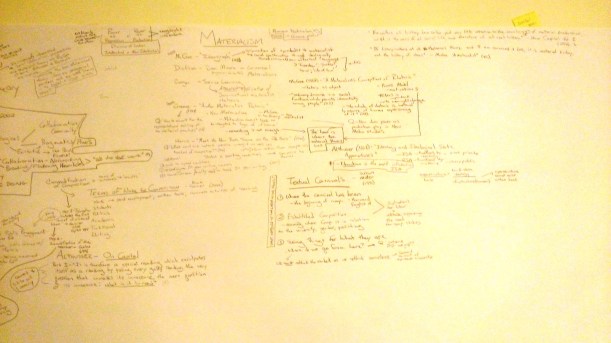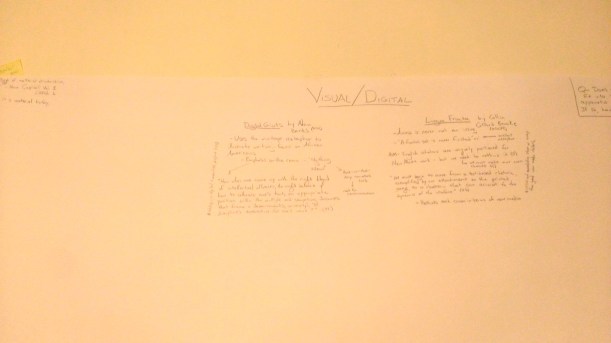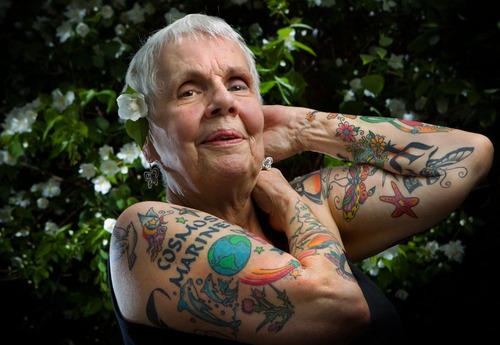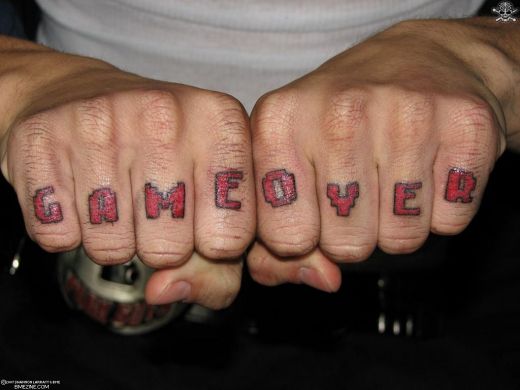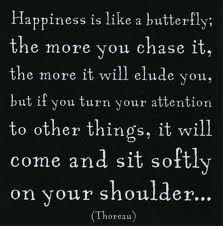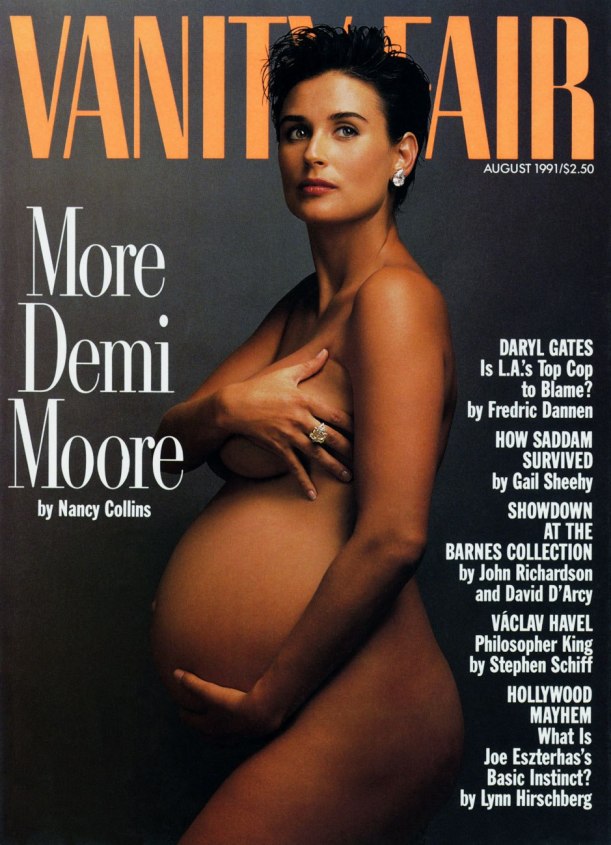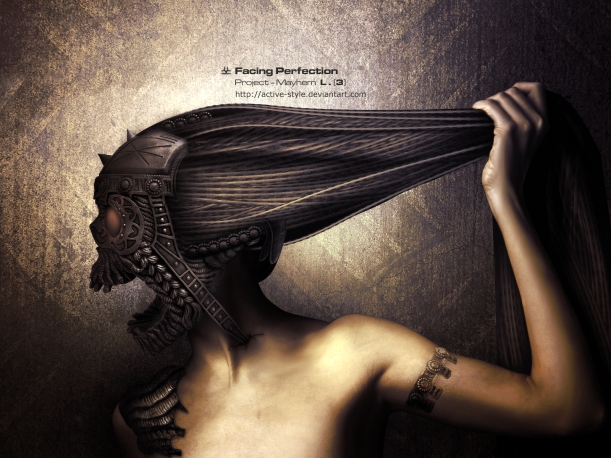As soon as I began to read “Gangs and Their Walls” by Ralph Cintron (1997), I thought about my own experiences growing up on the West Coast, hearing about gang violence, knowing several gang members, and even having a couple of ‘tagger’ friends (tagging is a MUCH different practice than gang related graffiti). In his paper, Cintron discusses gang graffiti and its placement in public spaces – its “manifestations of desire and frustration” (164), and how gangs are an alternate sub-altern group that do not fit under the same systemically voiceless rubric as do women, as Nancy Fraser discusses women as subaltern in her text “Rethinking the Public Sphere.”
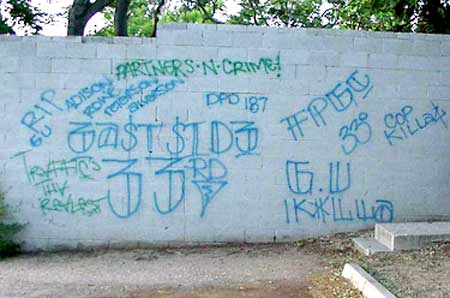
I couldn’t find one of the images from the text, so here is some random gang graffiti – taken from people.howstuffworks.com
This week, we also read “Community Literacy: A Rhetorical Model for Personal and Public Inquiry” by Lorraine Higgins, Elenore Long, and Linda Flower (2006). This paper is an interesting look at how local discourses can be fashioned so participants at a community level may have a voice in their everyday lives and ‘problems.’ In four parts, the authors define the problem(s), and discuss how to transform these problems into discourses where community members can take action for their own well-being, in their own lives, through writing and communicating among many embodiments of the levels of the hierarchical system.
It’s a little difficult to connect these readings to each other, though there are many ways this could be done. Even so, as usual, I’m going to take these off to play in the deep end of the pool and talk about something that has always been of interest to me: tattooing. In order to bring this into the conversation with some relevancy, I turn to the first section of the Higgins, Long and Flower piece: “Assessing the Rhetorical Situation” in which the authors claim that “problems are not empirical entities ‘out there’; they are, as so famously argued in the exchange between Lloyd Bitzer and Scott Consigny, interpretations” (6).
The first problem I seek to identify is the problem of the body as both public and private space. Like the wall of a building, or an underpass, or even the side of a cargo train-car, the body is both privately owned, and considered fit for public view, presumably while one is clothed. Like a wall, the body poses something of a problem area as it is both and neither belonging to public sphere. We see Fraser, for example, address women’s issues this way. When the body is marked in some way that is ‘other’ than what the dominant public sphere deems suitable, it may fall lower on the scale in “societies whose basic institutional framework generates unequal social groups in structural relations of dominance and subordination” (Fraser 66) – societies like America. Like the problem of domestic violence, or women speaking in public, the marked body hovers somewhere not quite public, and not quite private.
Bear with me as I make all this up pretty much on the spot – feel free to provide insightful feedback:
Until recently, and still arguably today, people that are tattooed are generally viewed as rebellious, often drug users, or even violent. Women with tattoos are sometimes assumed to be ‘loose’, or otherwise tainted. Google “Tattoo Women” and you get an entire page of hypersexualized women with chest tattoos. Depending on the nature and degree of tattooing, people are denied jobs, asked to cover parts of their bodies (sometimes rather creatively), or assumed to be less than a contributing member of society. Bodies of Inscription, by Margo DeMello and Bodies of Subversion, by Margot Mifflin are both scholarly books entering a discourse on tattooing, anthropologically in American and Canadian culture, and gender specifically, respectively.
Another issue I face in being interested in the rhetorical space of talking about tattooing, is in my inability to uncover ‘why’ people get tattooed. Popular reality television shows like L.A. Ink or Ink Master spend much of their time discussing the deep meaning and/or memorialization behind every tattoo they feature. As a result, as common argument I have heard is that people with tattoos should not have got tattooed if they didn’t want to divulge all the inner (private) meanings of their tattoos. It is as though the ‘norm’ of the public sphere is somehow transformed into a public body with permissions to interrogate, gaze at, and even touch a person who has chosen to get tattooed. Further, it is not uncommon to hear phrases like, “What will you do when you are older?” ; “How will you find a job?”; or “Don’t you know you are stuck with that for life?” – as though the tattooed body is somehow now in a prison from which the marked cannot escape. Somehow, because their body is less private according to the ‘norm,’ is it more of an inescapable prison than it was before it was marked?
Unlike communities aimed at building a literacy for a perceived common good (though Higgins, Long and Flower tell us that common ground is very hard to come by), tattooed people do not automatically form a common culture based on their tattooed status. There is no ‘local public’ for them to seek out. What would be interesting however, is to find (or create) an empirical study based around how two tattooed strangers might approach and greet one another as opposed to how someone ‘normal’ and endowed with the right to interrogate, gaze, or touch, engages a tattooed person. Again, this likely varies depending on the degree and nature of tattooing involved parties possess. Is there a public code one tattooed individual adheres to with another tattooed individual? If so, is this code understood, as a covert gang sign, color, or graffiti symbol might be understood in Cintron’s article? Where does one learn this code? Is it transferable?
As you can see, I am unsure exactly how this all ties together, but I have yet to see much work done rhetorically on this topic, though there is a particularly interesting piece by Sonja Modesti called “Home Sweet Home: Tattoo Parlors as Postmodern Spaces of Agency” (2008) which addresses the parlor as the space of agency and Megan Jean Harlow‘s “The Suicide Girls: Tattooing as Radical Feminist Agency” (2008), which addresses reappropriation of the body via tattooing in a subcultural third-wave feminist group called ‘The Suicide Girls.’ Neither directly address the public paradox of the tattooed body, or the particular nature of the tattoo, though there is rather extensive anthropological work on both gang tattooing and prison tattooing available for your reading pleasure.
I ask then, if a local public cannot be identified, how do we develop a common rhetorical capacity for tattooed people to express the myriad reasons for inscripting their flesh? How does the larger public sphere, the dominant culture that determines the ‘norm’ negotiate all the varieties of tattooed individuals? Do we bracket tattooing and pretend like we can’t see the ‘neck blast’ on our poetry professor? Do we pretend like we are not taken aback by the knuckle tattoos on the manager’s manager in the customer service department of the phone company? Are tattooed people to be shut away and relegated to telemarketing so ‘normal’ people don’t have to look at them? What – in a quasi-public/private situation as the appropriately exposed parts of the body – are we supposed to do to direct discourse that reduces discrimination in this context?


